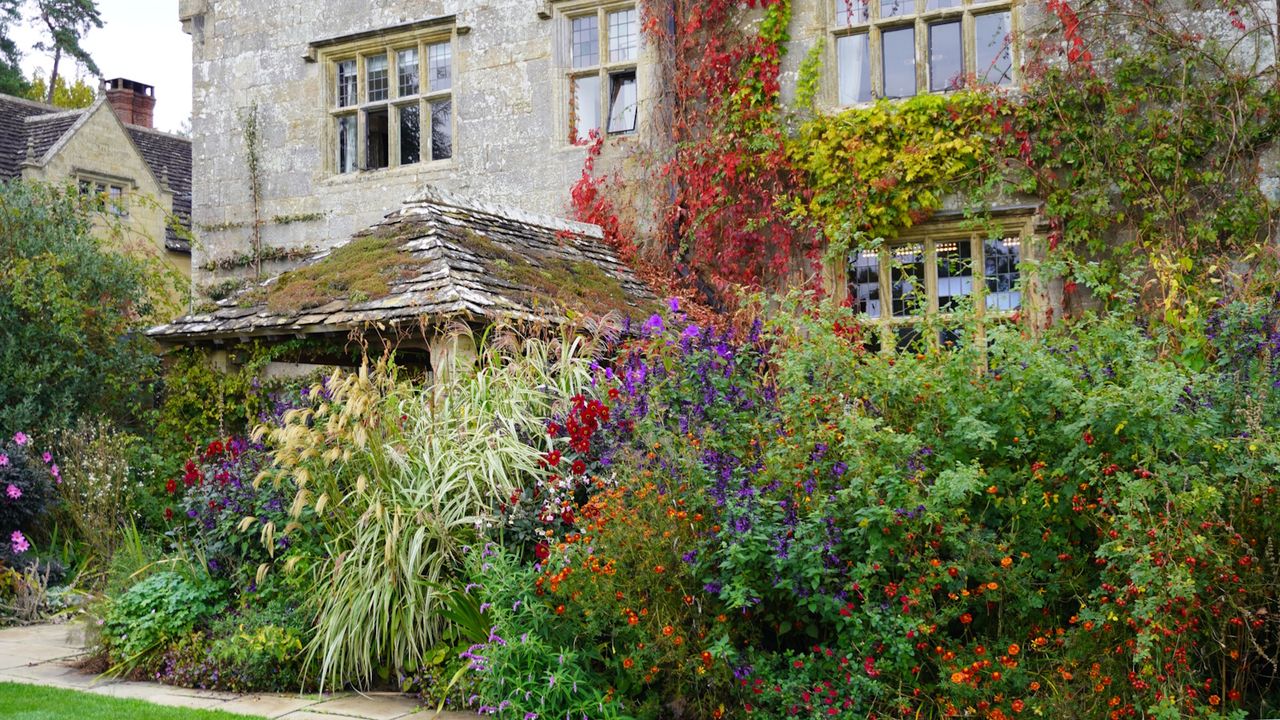Lifestyle
Discover Arts and Crafts Garden Ideas at Historic Gravetye Manor

The recent visit to Gravetye Manor in Sussex, England, offered a glimpse into the transformative ideas behind the Arts and Crafts gardens movement. Established in the late 19th century, this movement emerged as a response to rigid Victorian gardening norms, promoting a more relaxed and naturalistic approach to outdoor spaces. At the core of this philosophy was horticulturalist William Robinson, whose pioneering work at Gravetye Manor laid the groundwork for future garden design.
Gravetye Manor, an Elizabethan property purchased by Robinson in 1884, spans over 1,000 acres of woodlands and lakes. During his time there, Robinson introduced the concept of wild gardening, which stood in stark contrast to the formal plantings typical of the Victorian era. His experimental techniques inspired notable figures like Gertrude Jekyll, a central figure in the Arts and Crafts movement.
As visitors stroll through the grounds, the influence of Robinson’s ideas is evident. The garden features stunning mixed flower borders, wildflower meadows, and naturalistic plantings, all of which embody the principles that defined the Arts and Crafts gardens. According to Tom Coward, Head Gardener at Gravetye Manor, Robinson’s philosophies challenged the status quo of garden design, favoring hardy, native perennials over the rigid, symmetrical layouts of the time.
Key Influences of Gravetye Manor on Garden Design
The connection between Gravetye Manor and the Arts and Crafts gardens movement is particularly noteworthy. Although Robinson himself was not a direct participant in the movement, his innovative gardening techniques played a crucial role in shaping its principles. Jekyll, a close associate of Robinson, frequently visited the estate, absorbing his ideas on naturalistic planting. Her designs and philosophies were instrumental in popularizing the movement, which emphasized the garden as an extension of the home.
Today, Gravetye Manor serves as a historical example of these concepts, showcasing how gardens can seamlessly integrate with living spaces. The estate’s design invites visitors to contemplate practical applications of this philosophy in their own outdoor areas.
Three Easy Ideas for Your Own Arts and Crafts Garden
For those looking to incorporate elements of the Arts and Crafts style into their own gardens, Gravetye Manor offers several inspiring concepts that can be adapted to various settings.
1. **Create Garden Rooms**
The division of outdoor space into distinct “garden rooms” is a hallmark of the Arts and Crafts movement. At Gravetye Manor, this is exemplified by various zones that serve different functions, from vibrant flower gardens to event spaces. Homeowners can replicate this by using natural garden screening tools, such as trellises or hedges, to establish sections for different activities, like relaxation or vegetable growing.
2. **Bring the Outdoors In**
Connecting indoor and outdoor spaces enhances the overall aesthetic of a home. At Gravetye Manor, the kitchen garden not only produces seasonal crops but also features a cutting patch for beautiful floral arrangements. Homeowners can start small by growing easy-to-maintain flowers like dahlias or zinnias. Incorporating homegrown blooms into interior decor fosters a continuous link between the garden and the home environment.
3. **Plant Naturalizing Bulbs**
Emulating the natural look of Gravetye Manor can be achieved by planting naturalizing bulbs. These bulbs, such as tulips and daffodils, spread and multiply over time, creating a self-sustaining display. Even smaller gardens can benefit from this technique, offering vibrant seasonal color with minimal maintenance.
Gravetye Manor exemplifies the enduring legacy of the Arts and Crafts gardens movement, inspiring new generations to embrace naturalistic gardening. By adopting these simple ideas, anyone can transform their outdoor spaces into inviting extensions of their home, celebrating the beauty of nature in everyday life.
-

 World2 weeks ago
World2 weeks agoGlobal Air Forces Ranked by Annual Defense Budgets in 2025
-

 World2 weeks ago
World2 weeks agoMass Production of F-35 Fighter Jet Drives Down Costs
-

 Top Stories2 weeks ago
Top Stories2 weeks agoNew ‘Star Trek: Voyager’ Game Demo Released, Players Test Limits
-

 Science2 weeks ago
Science2 weeks agoTime Crystals Revolutionize Quantum Computing Potential
-

 Top Stories2 weeks ago
Top Stories2 weeks agoDirecTV to Launch AI-Driven Ads with User Likenesses in 2026
-

 World2 weeks ago
World2 weeks agoElectrification Challenges Demand Advanced Multiphysics Modeling
-

 Lifestyle2 weeks ago
Lifestyle2 weeks agoDiscover Reese Witherspoon’s Chic Dining Room Style for Under $25
-

 Health2 weeks ago
Health2 weeks agoGavin Newsom Critiques Trump’s Health and National Guard Plans
-

 Lifestyle2 weeks ago
Lifestyle2 weeks agoLia Thomas Honored with ‘Voice of Inspiration’ Award at Dodgers Event
-

 Entertainment2 weeks ago
Entertainment2 weeks agoFreeport Art Gallery Transforms Waste into Creative Masterpieces
-

 Entertainment2 weeks ago
Entertainment2 weeks agoFast & Furious Coaster Hits the Track at Universal Studios
-

 Science2 weeks ago
Science2 weeks agoWaning Crescent Moon: What to Expect on October 17







